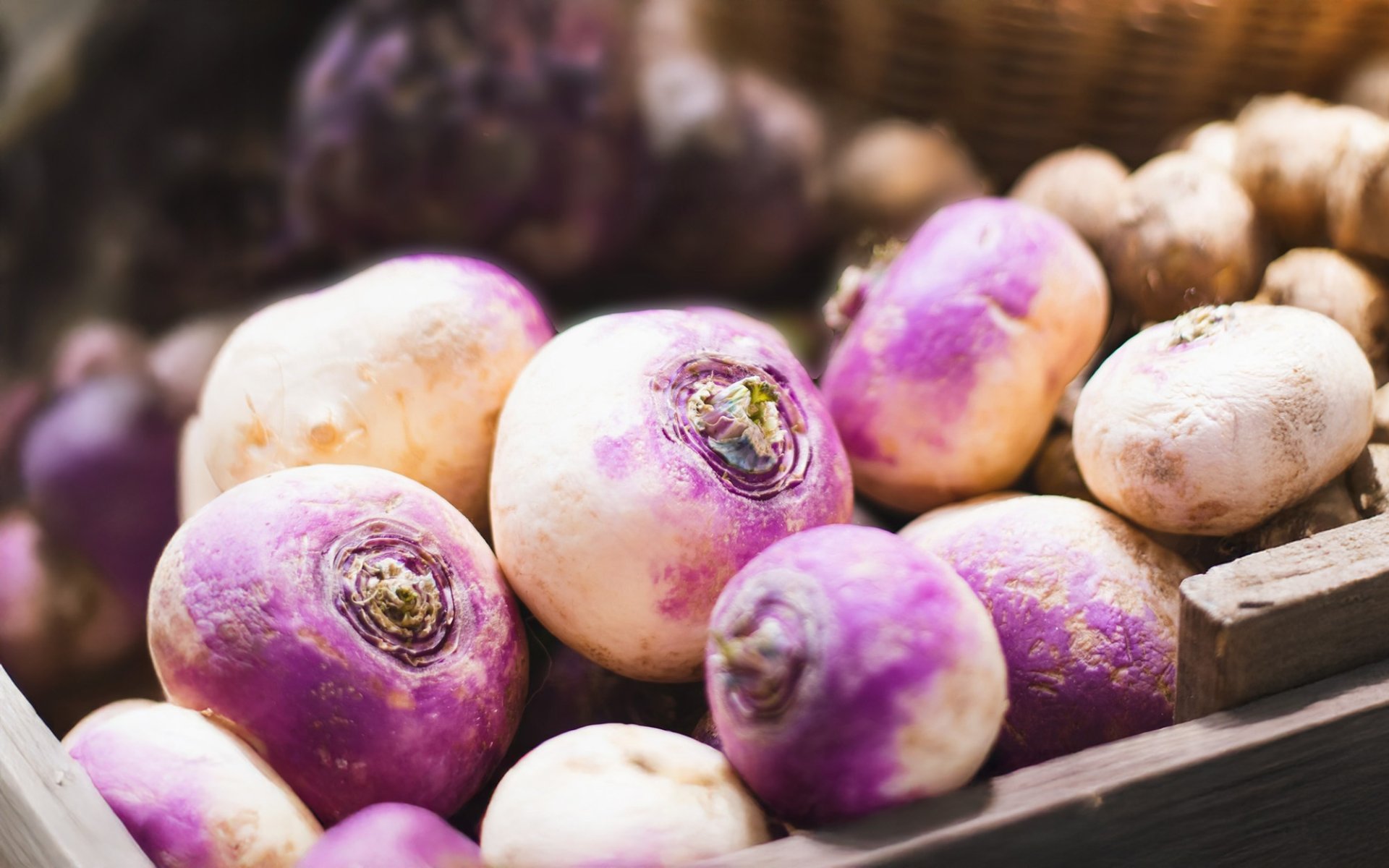Rutabaga
Last updated: 13 Aug 2025

Rutabaga, also known as Swede, is a root vegetable believed to have originated from a chance cross-pollination between a turnip and a cabbage. It was discovered in the wild regions of Scandinavia around 1600, first documented by the Swiss botanist Gaspard Bauhin, who named this root vegetable species Brassica napobrassica. However, common Swedes often referred to it as Rotabagge, meaning root bag, before it was later called Rutabaga.
This activity is called the International Rutabaga Curling Championship, a type of sport that uses Rutabagas as equipment. Its nature is similar to pétanque but is likely a local sport held for fun, taking place on the last Saturday of December each year at the Ithaca Farmers Market in New York. This event has been held since 1998, with participants required to use only Rutabagas in the competition.
However, there are rumors that this sport was secretly played for two years in 1996 and 1997, where vendors would celebrate the end of the season by throwing nearly spoiled frozen produce onto the market flooreverything from potatoes, cinnamon rolls, and cabbages to frozen chickens. Since then, the rules have changed, and the judging committee recommended using Rutabagas instead because their round shape resembles a ball, making them suitable equipment for the competition, especially since Rutabaga was an abundant and overflowing crop in the market.
A Vital Food Source During Wartime and Its Unique Characteristics
During World War I and World War II, Rutabaga served as a valuable food source due to its high nutritional content. It was used as a potato substitute in many European countries because potatoes became scarce and expensive at that time.
Rutabaga resembles a turnip but is larger and has pale yellow flesh, in contrast to the turnip's white flesh. Its outer skin is purplish-cream, and its inner flesh is crisp and juicy with a slightly sweet and bitter taste and a subtle aroma. When boiled, it resembles potatoes and can be used in various dishesstir-fried, steamed, fried, mashed, or boiled. It can be consumed both cooked and raw.
Popular Dishes and Health Benefits
Furthermore, every month, women's bodies lose a significant amount of iron during menstruation, which can decrease hemoglobin levels. However, Rutabaga is high in iron, which helps restore hemoglobin levels to normal, thereby helping to prevent fatigue and reduce menstrual pain.
A Journey from Animal Feed to a Quirky Sporting Event
In the 17th century, Rutabaga was introduced to Scotland and soon after spread throughout the United Kingdom. Initially, it was primarily cultivated as animal feed, but it quickly gained popularity in human cuisine. In the Americas, Rutabaga became known around the turn of the 19th century and gained such popularity that it even inspired a unique sporting event to beat the winter blues.This activity is called the International Rutabaga Curling Championship, a type of sport that uses Rutabagas as equipment. Its nature is similar to pétanque but is likely a local sport held for fun, taking place on the last Saturday of December each year at the Ithaca Farmers Market in New York. This event has been held since 1998, with participants required to use only Rutabagas in the competition.
However, there are rumors that this sport was secretly played for two years in 1996 and 1997, where vendors would celebrate the end of the season by throwing nearly spoiled frozen produce onto the market flooreverything from potatoes, cinnamon rolls, and cabbages to frozen chickens. Since then, the rules have changed, and the judging committee recommended using Rutabagas instead because their round shape resembles a ball, making them suitable equipment for the competition, especially since Rutabaga was an abundant and overflowing crop in the market.
A Vital Food Source During Wartime and Its Unique Characteristics
During World War I and World War II, Rutabaga served as a valuable food source due to its high nutritional content. It was used as a potato substitute in many European countries because potatoes became scarce and expensive at that time.
Rutabaga resembles a turnip but is larger and has pale yellow flesh, in contrast to the turnip's white flesh. Its outer skin is purplish-cream, and its inner flesh is crisp and juicy with a slightly sweet and bitter taste and a subtle aroma. When boiled, it resembles potatoes and can be used in various dishesstir-fried, steamed, fried, mashed, or boiled. It can be consumed both cooked and raw.
Popular Dishes and Health Benefits
- In Finland, several popular dishes feature Rutabaga, such as lanttulaatikko, Karelian hot pot, and Rutabaga Salad.
- In Scandinavia, Rutabaga is commonly mashed with potatoes and carrots, seasoned with butter, stock, milk, and cream, known as Rotmos or kålrabistappe in Norwegian.
- The Dutch often boil and mash it to make Stamppot, served with smoked sausage, while in England, it is a common ingredient in a dish called Cornish Pasty.
Furthermore, every month, women's bodies lose a significant amount of iron during menstruation, which can decrease hemoglobin levels. However, Rutabaga is high in iron, which helps restore hemoglobin levels to normal, thereby helping to prevent fatigue and reduce menstrual pain.
Related Content
Getting to Know Potato Dumplings A Dish Highly Popular Across Central and Eastern Europe


